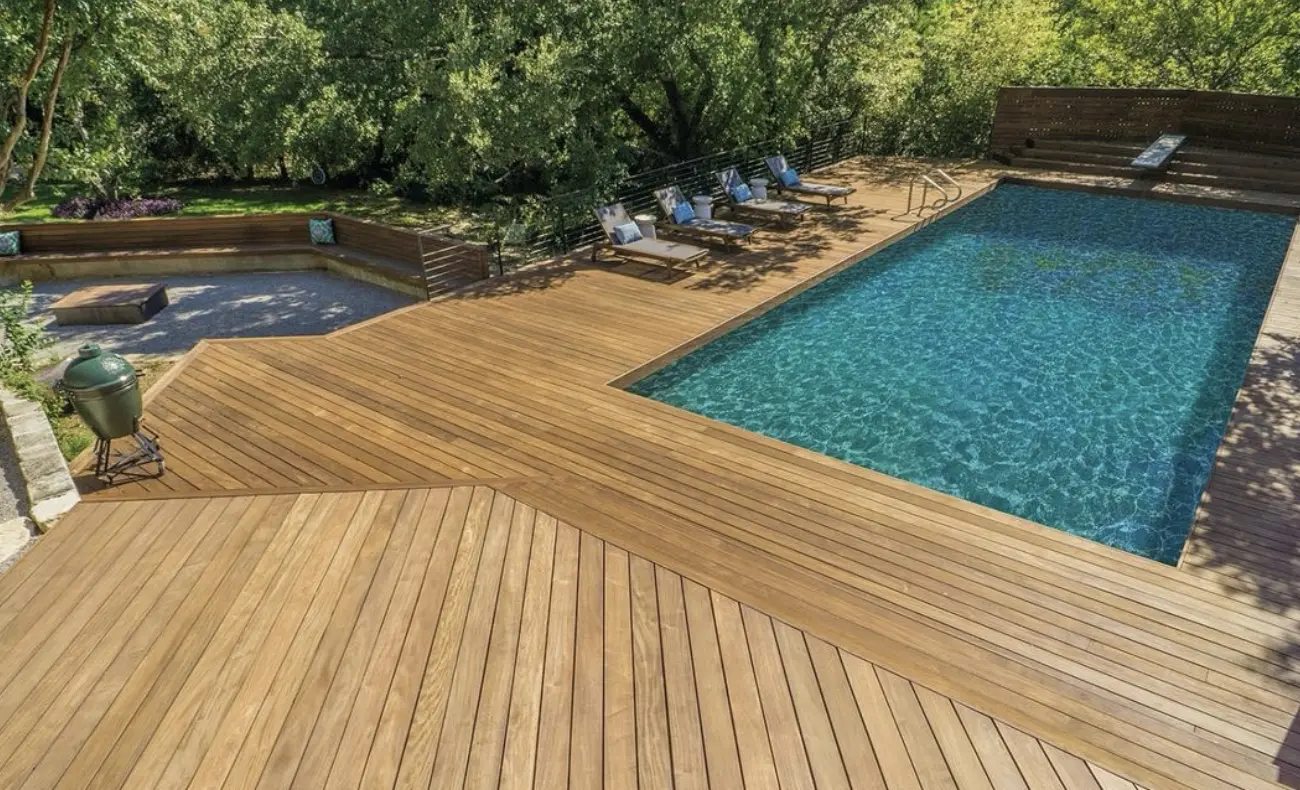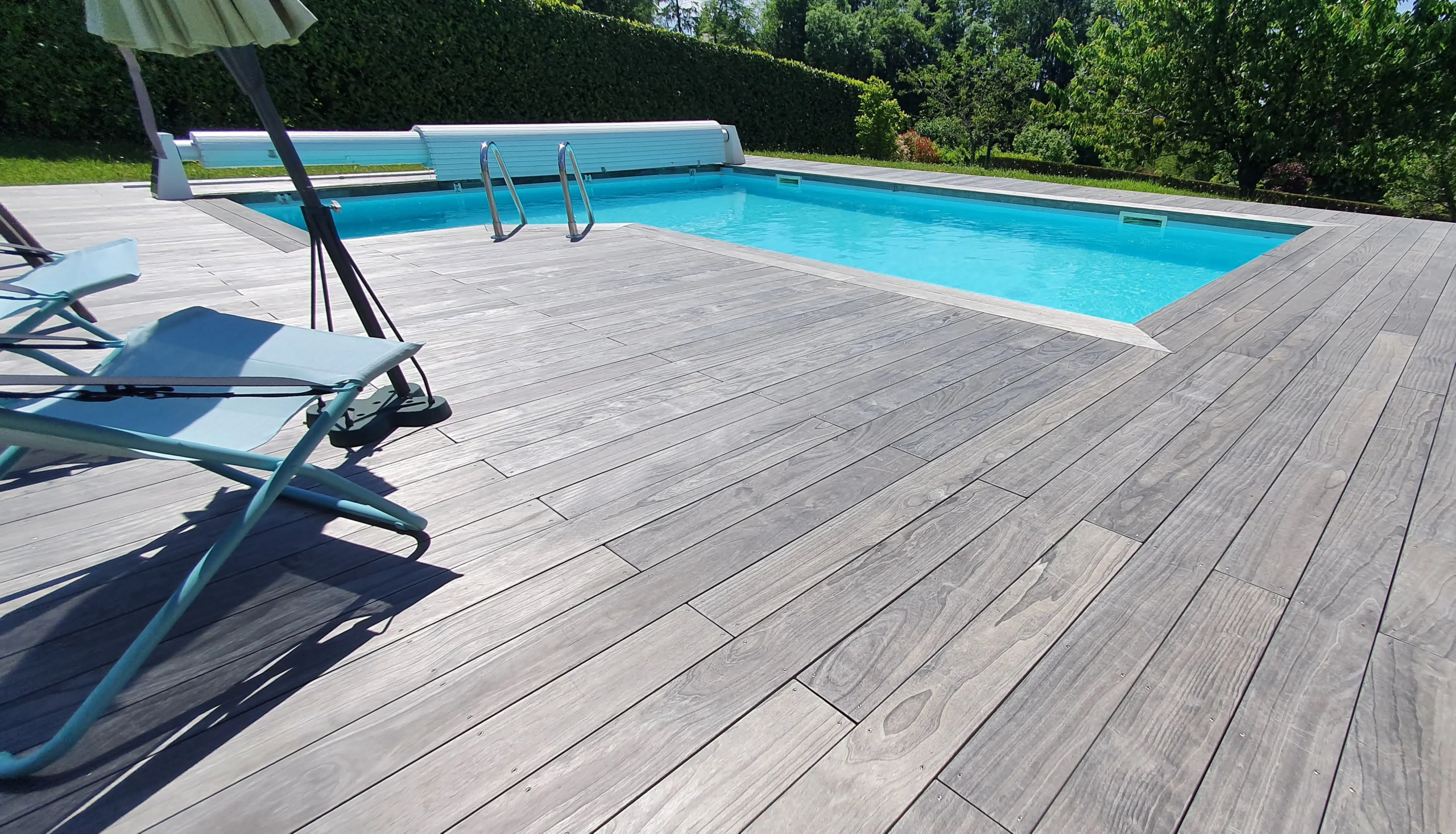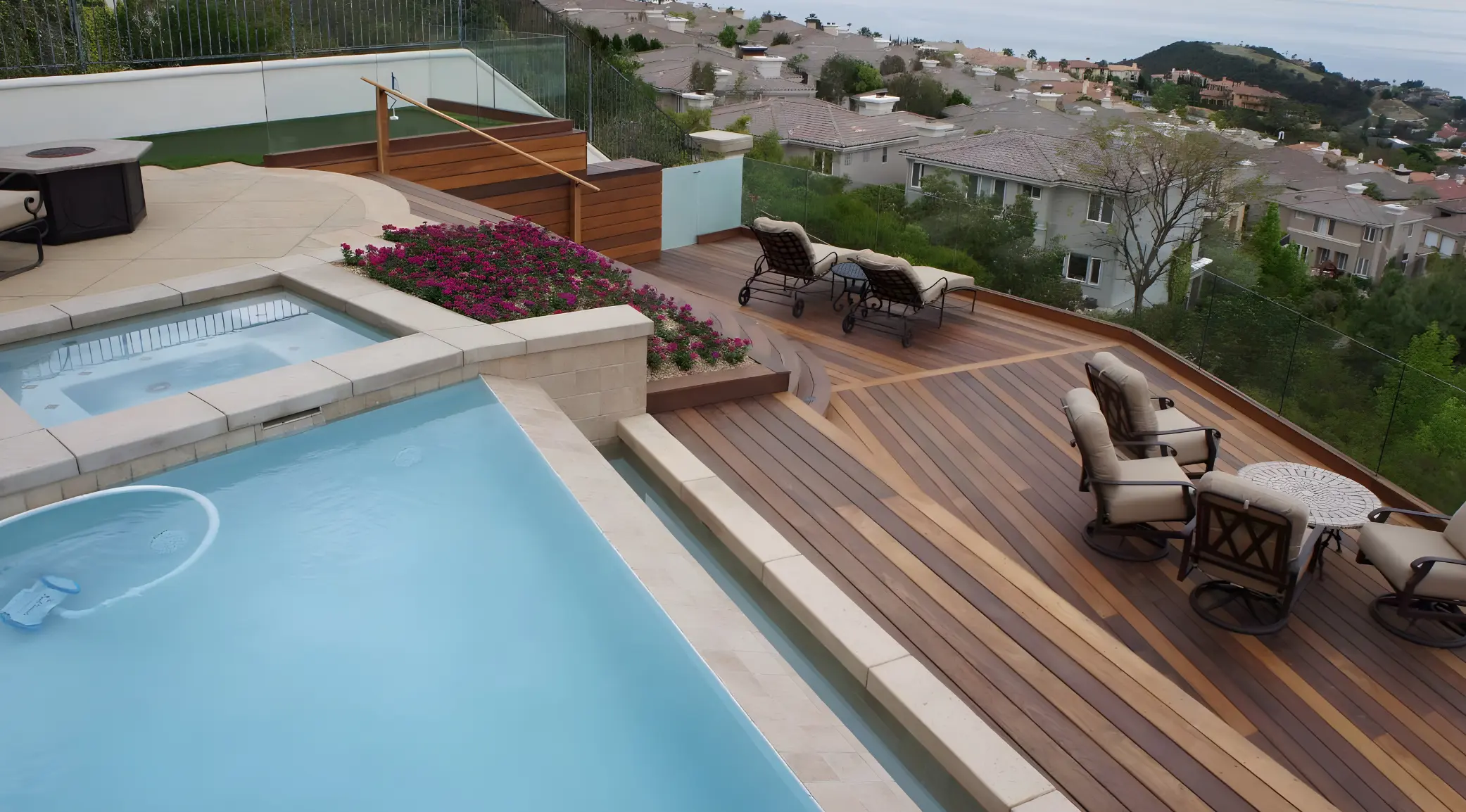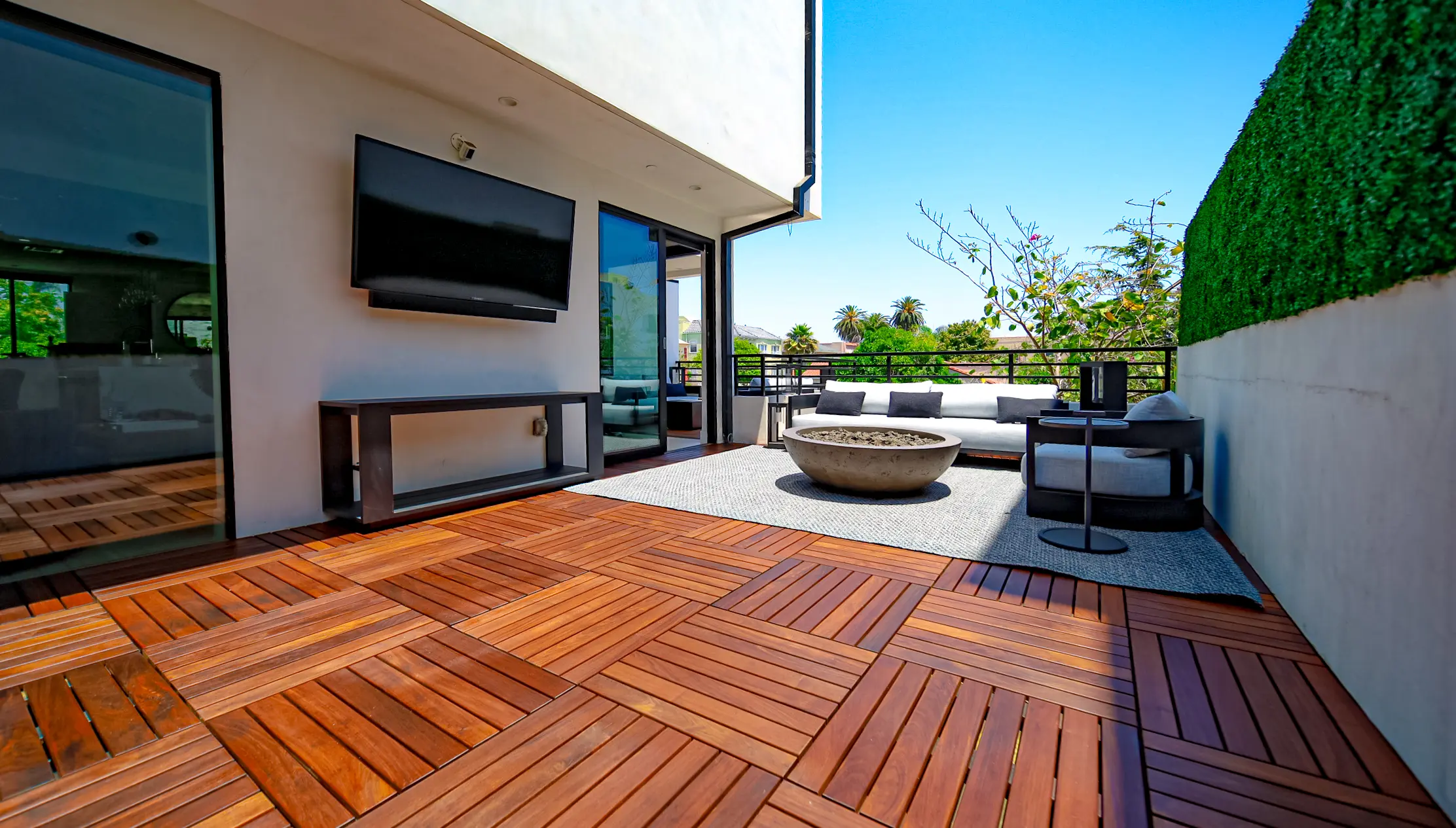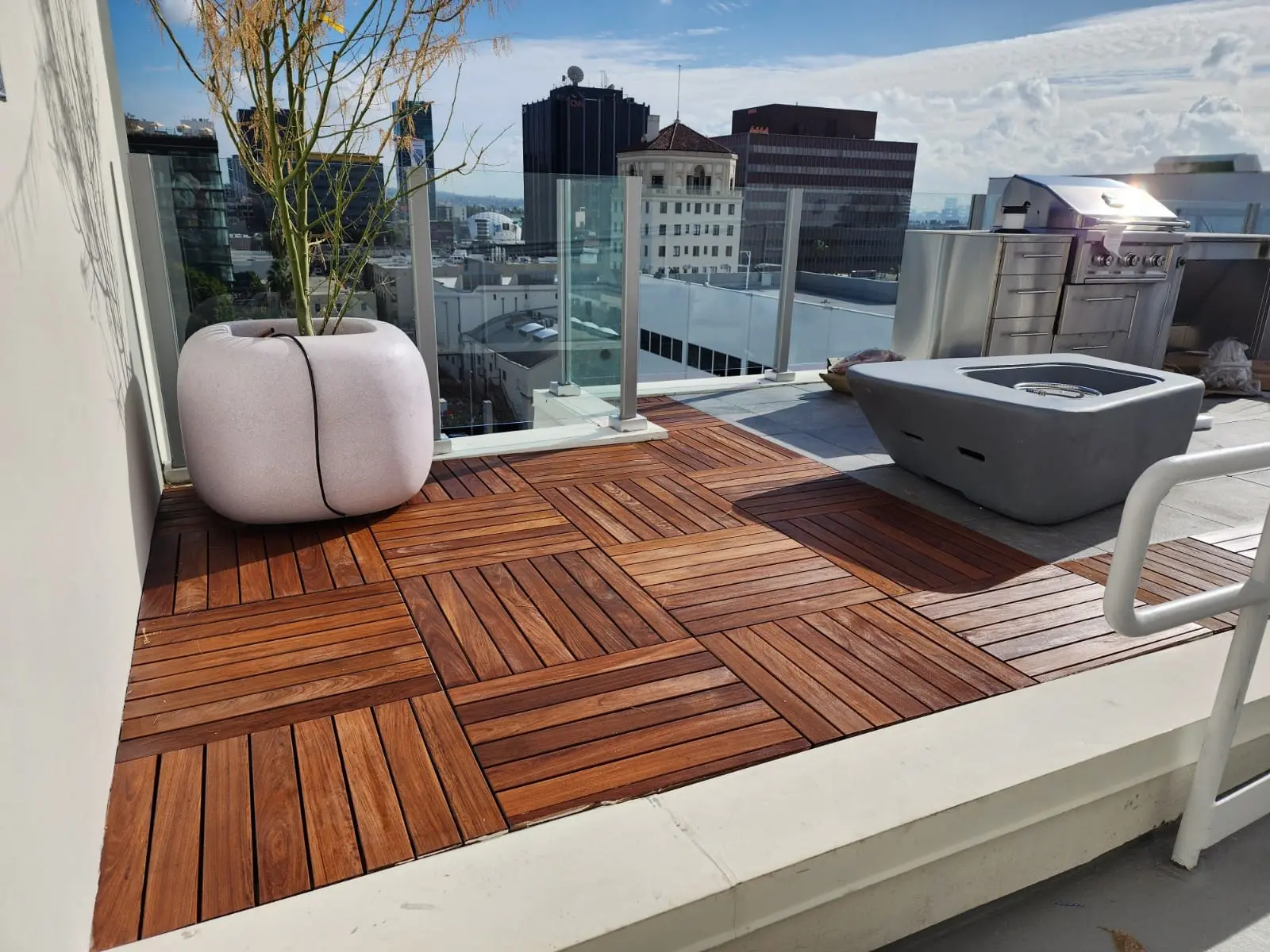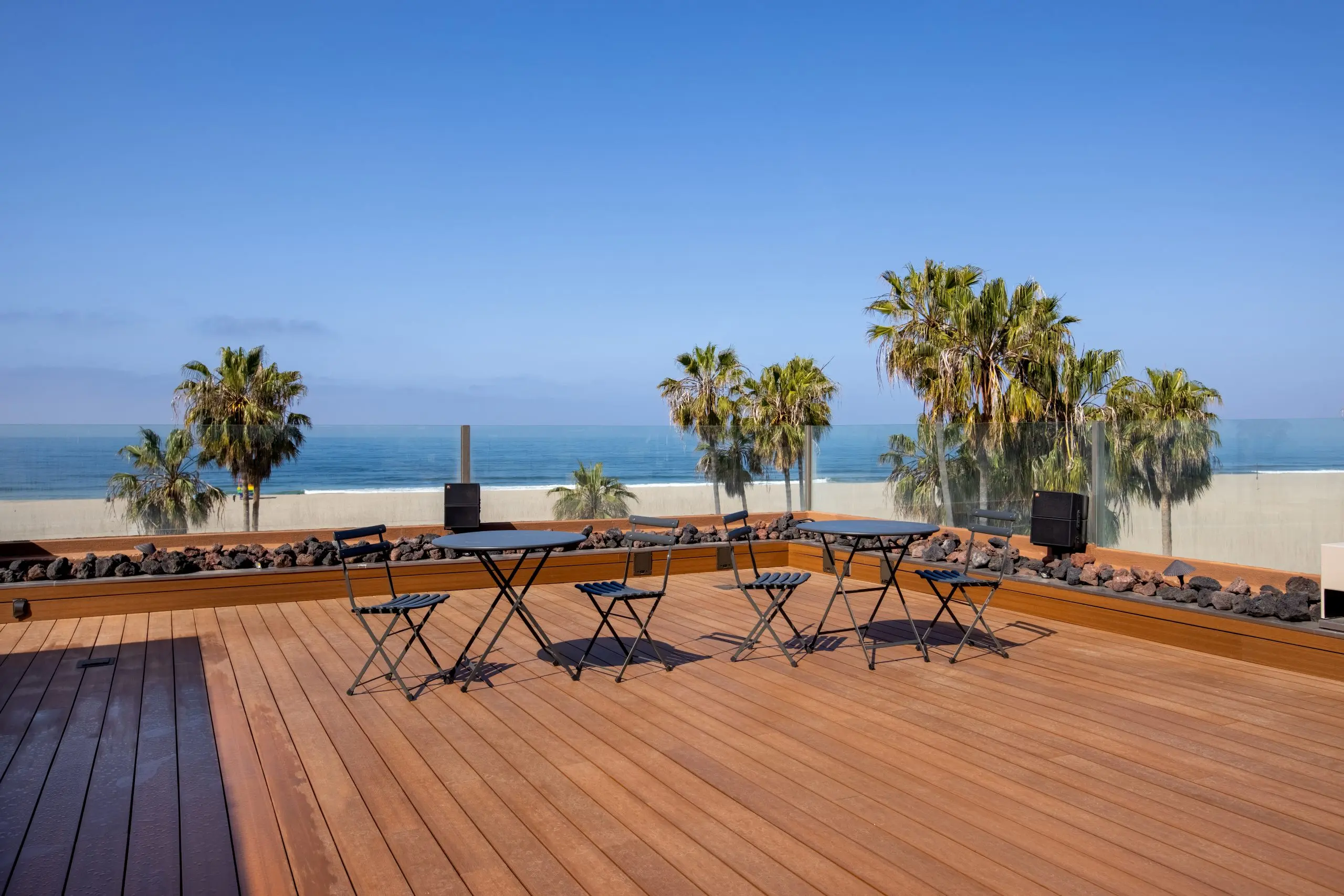-
shop
Hardwoods
Composite & PVC
Thermally modified
Hardwoods
Composite & PVC
Thermally modified
-
GALLERY
-
RESOURCES
When it comes to building a long-lasting, great-looking deck, the boards you choose are only half the equation. The fasteners, how those boards are secured to the joists, have a major impact on both the deck’s performance and its appearance over time. For tropical hardwoods like Ipe, Cumaru, and Garapa, as well as composite and thermally modified boards, not all fastening systems are created equal.
In this guide, we’ll break down the three most common types of deck fasteners: face screws, hidden clip systems, and plug systems. Each has pros and cons depending on your material, layout, and goals, especially if you’re working with dense hardwoods or synthetic materials.
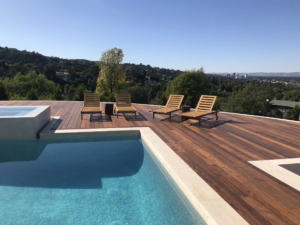
Face screwing is the traditional method of fastening deck boards: screws go directly through the face of each board and into the joists below. It’s straightforward, fast, and provides a very strong hold, especially helpful with dense species like Ipe deck tiles and Cumaru deck boards that can resist movement if properly secured.
Pros:
Cons:
Best For: Decks where function comes first or where budget and time are priorities. Also common for utility decks, fences, and structures hidden from main view.
Hidden fasteners are designed to grip boards from the side or groove, eliminating the need for visible screws on the surface. Most hidden fastener systems use stainless steel clips that fit into grooved edges or between gaps.
These fasteners are especially popular for composite and thermally modified decking, which often come pre-grooved. Some tropical hardwoods can also be grooved to accommodate clip systems, though this requires precision and the right tools.
Pros:
Cons:
Best For: Design-forward decks where aesthetics matter. A common choice for homeowners installing thermally modified wood, rich tropical hardwoods, grooved composite systems like TimberTech, Trex, or Deckorators.
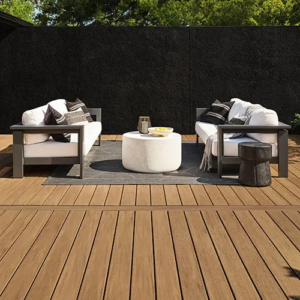
Plug systems offer the strength of face screws with a much cleaner finished look. You pre-drill and screw through the face of each board, then insert a matching wood or composite plug over the screw head. For hardwood decks, the plug is typically made from the same species, creating a seamless look.
Modern kits like the Camo Pro Plug or Starborn Pro Plug System come with perfectly sized bits and pre-cut plugs to speed things up.
Pros:
Cons:
Best For: Hardwood decks where both strength and appearance matter, ideal for luxury projects or high-end residential builds.
Different decking materials respond better to certain fastening approaches. Here’s a quick breakdown of what tends to work best:
For Ipe, Cumaru, and Garapa, plug systems or face screws with pre-drilling are usually the most reliable options. These woods are extremely dense, and while hidden clips can be used if boards are pre-grooved, they’re not always ideal for custom or cut-to-length installs.
For thermally modified woods like Ash or Ayous, hidden fasteners or plug systems work well. These materials are more workable than tropical hardwoods and easier to fasten cleanly, even with side-entry systems.
For composite decking such as Trex, TimberTech, or Deckorators, hidden fasteners are often the go-to. Most boards come pre-grooved and are specifically engineered for side clip systems, making installation clean and fast.
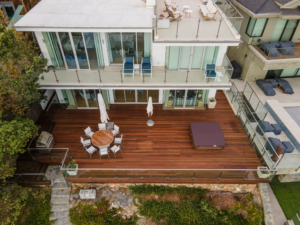
Fastener selection may not be the flashiest part of a deck build, but it plays a key role in how your deck looks, lasts, and performs over time.
It’s essential to use stainless steel screws, especially with tropical hardwoods. These woods contain natural oils that can corrode standard fasteners and lead to staining or structural issues. Stainless steel holds up to the elements and protects the integrity of your deck.
You’ll also want to consider material movement. Even thermally stable woods and composites shift slightly with temperature and humidity changes. Hidden fasteners and floating clip systems allow for smoother movement without surface cracking or fastener pop.
Lastly, think ahead to future maintenance. If you ever need to replace a single board, face screws make that job fast and easy. Hidden fasteners are harder to work around, and plug systems fall somewhere in the middle, offering a clean finish with a bit more flexibility than clips.
If you’re unsure which fastener system makes the most sense for your deck, our team at Beyond Lumber is here to help. We carry all the tools, clips, screws, and plug kits you need, matched to your decking material and backed by expert guidance.
